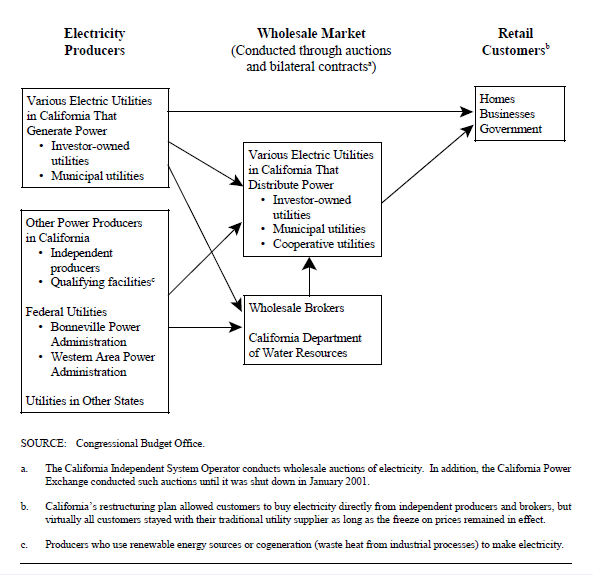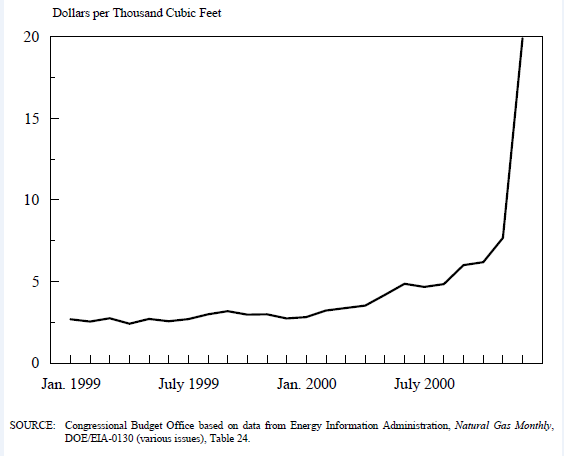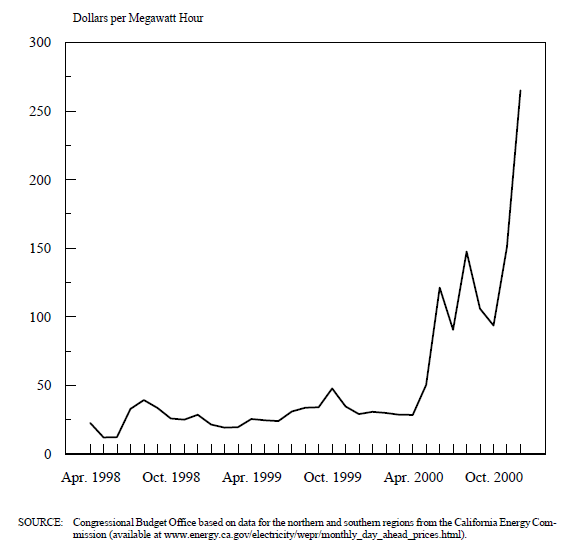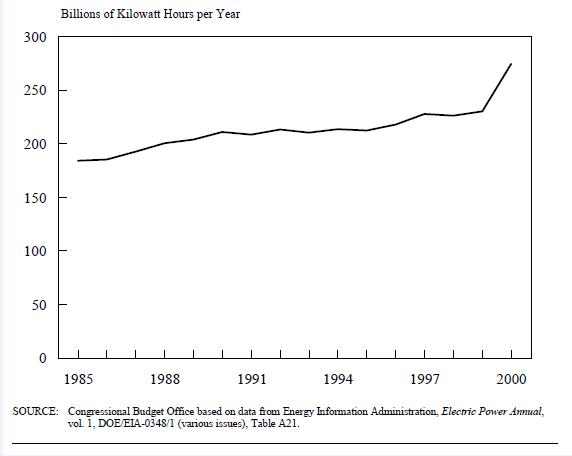Calfornia energy crisis – Reasons for deregulation and lessons for future
Overview:
A look at California energy market before deregulation:
California is a part of Western Interconnection which is an electric grid comprising of western states of USA, Canada, and some parts of México. The Price and supply of the energy in theses regions are co-dependent and thus California’s power prices and total supply is dependent of rest of the grid.

fig(1): who sells to whom in california energy market
In california, there are 3 private Utilities namely California Pacific gas and electric, Southern California Edison and San Diego and Electric who along with municipal utilities controlled the generation, transmission and distribution in the state. These private utilities operated in their exclusive areas which covered about 70% of energy market in California. The electricity prices in their own regions are set by these private utilities according to the cost of generation. However these private utilities have the option of selling power out of the state. So, if they generate excess electricity more than what is needed in the state, the final price is set so that the cost of generation of this excess electricity is also recovered. Hence the consumers and municipal utilities are forced to pay extra than what they should have paid. In addition to this there is a federal policy which requires utilities to buy all of the renewable energy generated in the state first followed by power from traditional ways of generation. In general the prices of energy from these renewable sources are set (according to the 1978 federal Utilities regulatory policy act) by the standards of the most expensive type of generation like nuclear power plants. This gave private producers the opportunity of using the most expensive way of generation even though they could generate same amount of electricity through much cheaper means inorder to gain more profits. This resulted in high prices of energy for years in California.
Reasons for deregulations:
In 1996 the price of electricity is 75% more than the prices in rest of the regions in United States connected to the same grid.The demand in California has been gradually increasing compared to its generation capacity (In early 1990’s-2000, in western states, the power generated generally exceeds the demand). In 1996 these utilities sold about 20% more than the generated electricity. However these utilities have option of selling power to other states. Hence the final flow of power sometimes has been out of California.As 3/4 of the total energy market is controlled by these utilities, it is assumed by California government that by increasing competition between these utilities and by introducing private producers, overall prices of the power could be reduced. By deregulation, consumers will have choice of selecting their own service provider thus they can choose providers with low cost which further increases the competition thus achieving the goal of reduction in prices. Deregulations are also encouraged because this will force the private renewable energy producers to use much cheaper methods of generation.
How deregulation effected California energy market and incidents that led state into a crisis and lessons for future:
The deregulations forced the main 3 utilities in the state to divest about 40% of the market they held to private investors. Although they regained the ownership of these transmission and distribution units in these areas. They are forced to buy electricity from these private producers on daily basis and are not allowed to get in to long term contracts with them. This led to sharp spikes in prices which was a burden for both consumers and utilities. In order to save consumers from this fluctuating high prices, California government, in 2001 froze the price on the consumer side to pre deregulation rates. This meant that utilities are forced to buy electricity at higher costs and sell it to consumers and municipal utilities at much lower cost. This meant that utilities were running at heavy losses. Some private producers like Enron, shutdown their generation units in the name of maintenance to raise these prices.

Utilities in order to cut down their losses shutdown for certain period of time. This led to large scale blackouts in the state and heavy losses for utilities which ultimately resulted in bankruptcy of PG&E and heavy losses for other 2 Utilities.

This crisis may have been avoided if utilities were allowed to have long term contracts with the producers which would have allowed them to buy electricity at a constant price and may have saved them from such heavy losses and actually give them an opportunity to offer electricity to consumers at varying low prices.
When the deregulation process was started, there was little gap between generating capacity and demand in the state however, the demand in the state has been gradually increasing due to several reasons like rise in population, temperatures, decrease in hydro electricty from rest of the grid (Hydroelectric generation fell by about 18% in some western states) However new power plants were not build at the same pace as increase in demand. In addition to this, the already existing oil and gas generators were very old. About 60% of these generators used during peak loads were atleast 30 years old .

There should be authorization of the amount of electricity that is being driven out of the state with respect to necessity in the state. New transmission lines should be approved according to the demand in that locality.
While price stability is essential, freezing the retail prices so that consumers would pay less is not efficient way of doing it. There should be some relation between the amount consumers pay and cost of generation, transmission, distribution which would ultimately encourage consumers to use more electricity when prices are low and to cut down their usage when prices are high.